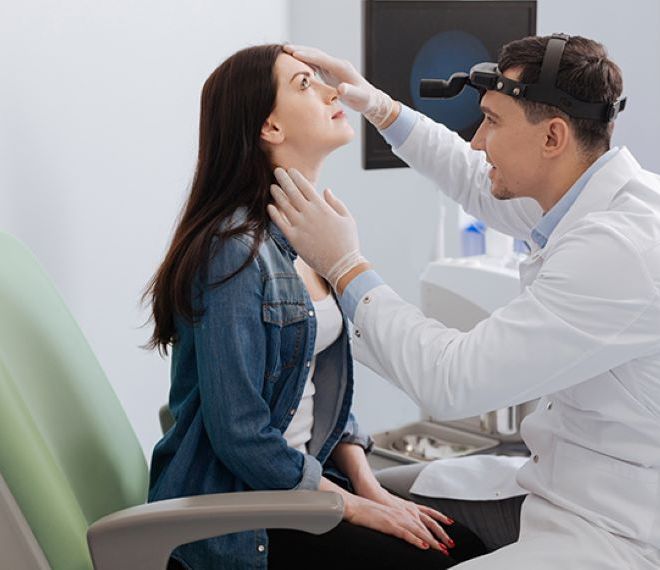How to prepare for tonsillectomy!

The tonsil is located in the oral cavity, part of the pharyngeal gate, the task of which - like the lymphatic organs - is to activate the immune defense against pathogens that attack the body. In addition to the pharyngeal tonsils, the nasopharyngeal tonsils are located in the upper part of the pharynx, and these can cause different problems.
Why should the tonsils be removed?
In the classic case, the nasopharyngeal tonsil reaches its maximum function in preschool and elementary school age, and completely withers in adulthood. The reason for its removal is primarily its swelling or enlargement caused by upper respiratory tract infections, which in the case of small children can often lead to otitis media or purulent-looking rhinitis. In this case, it no longer performs the previously mentioned protective function, but the tonsil itself maintains the disease, which is why surgery is necessary. In the case of tonsils, repeated bacterial inflammation or enlargement induced by a certain viral infection can lead to removal. In this case, if we do not dedicate ourselves to the removal, it can lead to partial or complete airway obstruction, commonly known as snoring or sleep disorders.
Tonsillectomy in adulthood, as surprising as it may be, is not rare. Many times, the surgery that was missed in childhood is delayed, or the unexpected repeated follicular tonsillitis starts right then, but it is not surprising if an abscess around the tonsils immediately leads to the surgery. In addition, if it is not an inflammation, most sleep surgery pharyngoplasty operations also include the removal of the tonsils.
When should it be removed?
It is important to distinguish between the throat and the nasopharyngeal tonsil, since the former is usually removed in elementary school or young adulthood, while the nasopharyngeal tonsil can be removed from the age of 2. The removal of the tonsils ideally takes place until young adulthood, because viral pharyngitis is more common later. Of course, there is no specific age range, which means that adult surgeries are also common.
In addition to the above, the timing of the surgeries can also be influenced by what other health problems we have. During the summer season, people suffering from allergies are not recommended to undergo the intervention, but the high temperature and the development of fronts during the recovery period can also burden a completely healthy body. That's why it's worth taking advantage of the cooler months, since the weather in the coming weeks will allow both the surgery and the recovery period to go smoothly, while also reducing the risk of infection.
How are the tonsils removed?
During the classic procedure, the tonsil is removed from its "case", and then the existing bleeding is quelled with bipolar cautery devices. On the other hand, with the latest plasma knife technology, the cut and the bleeding are stopped at the same time, this does not damage the muscles of the pharyngeal wall more deeply.
After the approximately 30-minute intervention, 24-hour observation in the hospital is recommended, but after that you can rest at home, avoiding any kind of physical work.
How can we prepare for the intervention?
As with all surgeries, this also affects the functioning of the immune system, so it is recommended to prepare for the intervention with vitamins - especially vitamin C -, supplements that strengthen the immune system, and compliance with throat hygiene rules.
After surgery
After the operation, we can feel pain for an average of 10-14 days, but by the third week the recovery can be complete. The pain can be alleviated with painkillers recommended by the doctor, but it must be emphasized that drinking 2-3 liters of liquid per day is necessary, even if swallowing causes discomfort. If we do not observe the above and drink little, the wound may become infected, we may develop a fever, and post-bleeding may also occur. Some studies have proven that honey has a special pain-relieving and wound-regenerating effect after tonsillectomy. Additionally, non-steroidal pain relievers may be helpful during the recovery phase.
After about 2 weeks after the rest period, we can already go out with company. Wearing a mouth mask is only necessary if we are surrounded by sick people in the company we go to or if we suffer from a fundamentally immune-deficiency disease.
In addition to avoiding company, you should also pay more attention to your diet in the first 2 weeks. Extreme (very hot or too cold, spicy, acidic) foods and drinks, as well as the consumption of dairy products in the first few days, should be avoided, but at the same time, pleasantly cooling foods, such as dairy-free ice cream, which can help cool the tissues, can be safely consumed.
We don't have to worry about the operation, the sensation we experience after the removal of the tonsils will change somewhat, but swallowing or speech will not change. It is very rare that scar formation affects the function of the soft palate, in which case the original position can be restored with simple speech therapy exercises.
If you also have tonsil problems, visit our ENT specialists! You can book an appointment via our telephone customer service at +36 1 790 7070 or online!
Get to know our otolaryngologist:
